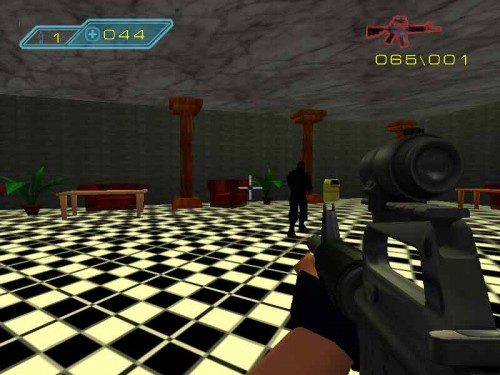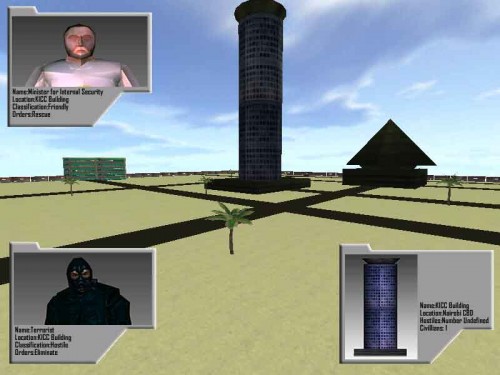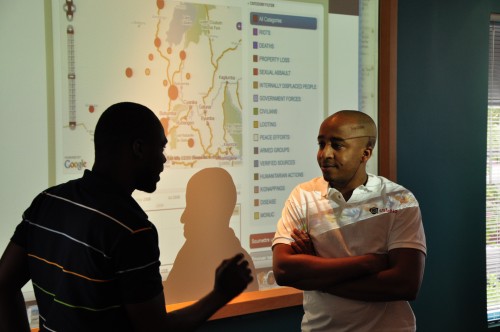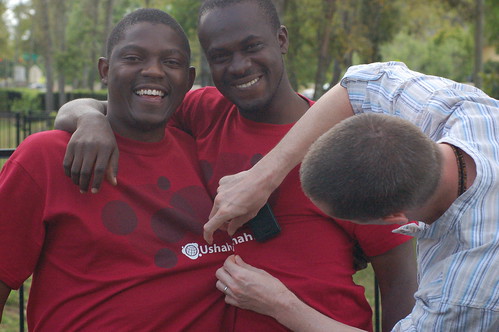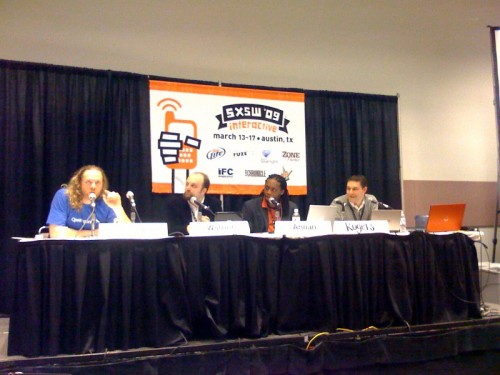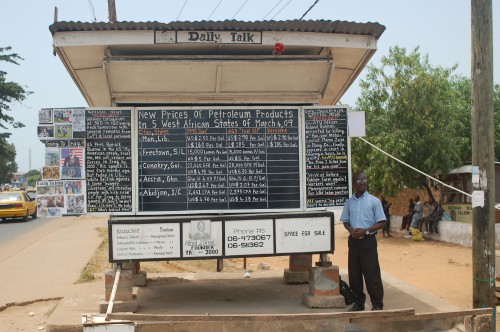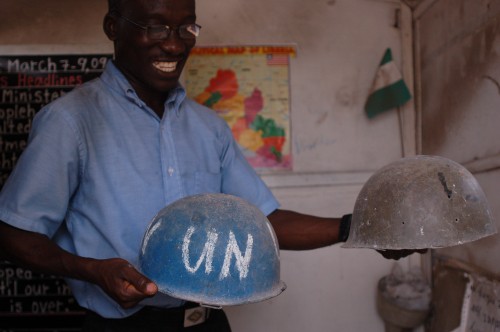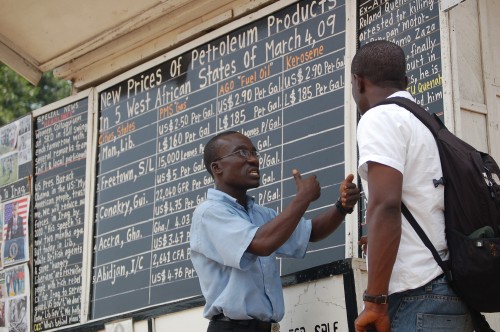WhiteAfrican
Where Africa and Technology Collide!
Author: HASH (page 31 of 106)
Maker Faire Africa (MFA) is a new event celebrating the innovation, ingenuity and invention within Africa – happening August 13-15 of this year in Accra, Ghana.
We came at this event from a specific angle – we mixed the types of individuals who show up on AfriGadget and Timbuktu Chronicles, and the ethos of the greater MAKE community, all with the blessings of the good folks at Maker Faire. The dates were chosen to coincide with Amy Smith’s and MIT’s International Development and Design Summit (IDDS), which will run for 3 weeks before MFA, also in Ghana.
As Emeka puts it:
The aim of a Maker Faire-like event is to create a space on the continent where Afrigadget-type innovations, inventions and initiatives can be sought, identified, brought to life, supported, amplified, propagated, etc. Maker Faire Africa asks the question, “What happens when you put the drivers of ingenious concepts from Mali with those from Ghana and Kenya, and add resources to the mix?â€
How You can Support MFA
 First off, help spread the word! Let people know where and when it will be. Share the link to the site, grab a badge, blog it.
First off, help spread the word! Let people know where and when it will be. Share the link to the site, grab a badge, blog it.
Second, help us find sponsors. If you know an organization or individual who would like to support this amazing event, put us in touch with them. It could be monetary, or it could be donating some cool gadgets, gear, tools or devices for people to hack on while there. (example idea: we’d love to get some LEGO Mindstorm kits for the local high schools).
Third, come. If you have the time and ability, we’d love to have you, your ideas and your gadgets at MFA.
The Team
In my role as founder of AfriGadget, I’m part of the organizing team to put together Maker Faire Africa, joined by my an excellent group of people including:
- Emeka Okafor of Timbuktu Chronicles and the Director of TED Africa
- Erik Hersman, Founder of AfriGadget
- Lars Hasselblad Torres, Director MIT IDEAS Competition
- Mark Grimes, Founder Ned.com and Founder NedSpace
- Nii Simmonds of Nubian Cheetah
Want to get involved yourself? Get in touch!
Mozambique – W3C Workshop: Africa Perspective on the Role of Mobile Technologies in Fostering Social and Economic Development
Nathan Wolfe gave one of my favorite talks at TED 2009. It’s about finding, tracking and replacing activity that allows animal-bound viruses to jump to humans – generally through the practice of bush meat hunting. Viruses like ebola, HIV, bird flu and yellow fever.
The Streetwise computer terminal is nearly indestructible. I saw first-hand a demonstration of a unit at the MobileActive conference in South Africa last year and was awed when the gent started jumping up and down on it. It’s made for students in developing countries by South African firm Psitek who fabricates the devices in Stellenbosch, just outside Cape Town.

What they are doing is creating tools that might not look like the internet that you’re used to in the West. It’s lean content and services (information and communication) delivered to a lean device. For instance, there is a whole software application working on the backend to pair down content so that it’s quick to send to these devices. (ex: take 100kb of Wikipedia and strip out all but the text content – the whole article, and skip out on the extraneous images and get that file size down to 2kb.)
Why is that important? The device works off of GPRS connection to connect to the broader internet. This means it can work wherever there is a mobile phone coverage, and it works with low signal strength and it’s not nearly as expensive.
- SIM card holder within the battery space in the back.
- 12 volt power input
- 5 USB connections
- FAX line – low cost options for printing and scanning
- 64Mb of inbuilt flash memory – can extend via USB to a hard drive (and USB sticks)
Currently, the Streetwise comes in two types; the main terminal (with all the goodies) and then an extension terminal. You can connect 4 extensions to the main terminal. Cost was estimated to me at the time as $350 for the main terminal and $115 for each extension. The main cost for these devices are the GPRS module and fax interface.
If someone does a search on the device, they route all requests through Google on Wikipedia and return the first result. That’s in Beta of course, it will be more robust in the final version, and offer a few more options.
Final Thoughts
I can’t speak for it’s educational value, I’ll save that for the educators, but it is a very interesting device. The fact that they decided to go off of the widely available GPRS services and make it so light-weight and rugged is telling. It’s designed for a specific use, and doesn’t apologize for it. For me, it’s like the OLPC, I don’t know how useful it really is, but I do know that it gets computers into the hands of young children, which offers a huge return over time.
I’ve got a new theory: one of the best tests of a tech community’s creativity is how many people are coming up with non-business related applications and games. It makes sense that the two games below come from Kenya and Ghana, two of the biggest “tech hubs” in Africa.
Another 3d Shooter from Nairobi
I think it’s a good sign that I just heard about a new 3D FPS shooter game called Mzalendo (not to be confused with the “eye on Kenyan Parliament website also called Mzalendo that Ory and M put together…). It is being created by Morgan of TriLethal Labs in Nairobi, and they have just released the Beta version of the tech demo outlining the capabilities of the New Siege3D graphics core.
Africa’s 1st iPhone Game?
I’ve profiled Wesley before, and he’s now partnered up with another game developer in Ghana named Eyram. Their newest claim is that they’re about to release (early April) the first iPhone game from Africa, called “BugzVilla” (I’m not sure if it is the first game, let me know if it is/isn’t).
It’s a game in which you crush bugs by tapping the screen and earn points as you level. Shake the screen to release more bugs, and watch out for the red ants! Here’s a short video on their new game:
I’ll try both of these new games out as soon as I can get my hands on them. Eyram assures me that their new game will be on the iTunes App Store in April, so you can bet I’ll buy it and play it.
This last weekend was the first of what I hope will be an annual meeting for Ushahidi. It was a time where we brought in the most active of the African programming community, and invited in some of the top subject matter experts in SMS, mapping and machine algorithms to better set Ushahidi’s technical course for 2009.
Attendees
Erik Hersman – Ushahidi, community and strategy
David Kobia – Ushahidi, lead dev
Juliana Rotich – Ushahidi, projects and user experience
Henry Addo (Ghana) – Ushahidi, core architecture, projects
Ken Banks (UK) – FrontlineSMS founder
Brian Muita (Kenya) – Java, tech hub manager
Patrick Meier – Harvard Humanitarian Initiative, conflict early warning expert
Andrew Turner – Mapping, neo-geography expert
Chris Blow – Usability, user experience expert and Swift River
Soyapi Mumba (Malawi) – Front-end map interface, Javascript
Caleb Bell – Web designer, Ushahidi admin area
Morad Rayyan (Qatar) – End-user (Al Jazeera)
Ka-Ping Lee – Google.org dev, PFIF
Sean Gourley – Mathematician, predictive algorithms
Kaushal Jhalla – Swift River project manager
Items discussed
There were two main thrusts for the meeting. First, the current focus on getting Ushahidi to Beta. Items discussed included everything from finalizing the installer process (and simplifying it), to page load times, map tile caching and subscribing to alerts.
The second was areas of future growth that we’ll be working on in the coming year. This is where we discussed how Ushahidi can fit into the microblogging and mobile social networks, Insta-wikis, Swift River and how we can work with voice and other projects like Huridocs and Sahana.
Next steps
We not only covered each of these areas as concepts, but we broke into smaller groups to outline the actual next steps in getting the project moved further.
- User experience
- Incoming news streams
- Offline capability
- Swift River
- Core architecture
This week Henry, Brian, Soyap, David and myself are spending the week together working on the most critical items on our to-do list for beta release. Others, like Kaushal, Andrew and Chris are taking Swift River to the prototype stage.
I’m at SXSW in Austin, Texas in a panel that one of my friends, G. Kofi Annan is on. They’re talking about the reality of the mobile web in emerging markets like Africa. Here are some notes and quotes from this session.
“80% of the world has mobile network coverage. It’s an obvious thing to say that the mobile web should be the starting point for where we give access to the world.” – Matt Womer of the W3C Mobile Web Initiative
“More people have access to a mobile phone than have access to running water. More people have access to a data enabled mobile phone than there are desktop computers in the world.” – David Rogers of OMTP
What is the “Mobile Web”?
I got up and asked a question, as I’m curious as to how this panel defines the “mobile web”. Is it just a web browser on your phone, or is it any type of read/write ability on data enabled phones.
The panel batted back and forth the idea that there really shouldn’t be a difference between mobile and PC webs. It’s really the same thing. You don’t need a browser either, it’s just the ability to read/write to that database of information – which is the web. (Excellent! This is what I’ve been thinking for a while) This was best summed up by this quote:
“The mobile web is anything you can do while you’re walking along.” – Charles McCathieNevile of Opera
Alfred Sirleaf is an analog blogger. He take runs the “Daily News”, a news hut by the side of a major road in the middle of Monrovia. He started it a number of years ago, stating that he wanted to get news into the hands of those who couldn’t afford newspapers, in the language that they could understand.
Alfred serves as a reminder to the rest of us, that simple is often better, just because it works. The lack of electricity never throws him off. The lack of funding means he’s creative in ways that he recruits people from around the city and country to report news to him. He uses his cell phone as the major point of connection between him and the 10,000 (he says) that read his blackboard daily.
Liberia’s Blackboard Blogger from WhiteAfrican on Vimeo.
Not all Liberians who read his news are literate, so he makes use of symbols. Whether it’s a UN or military helmet, a poster of a soccer player or a bottle of colored water to denote gas prices, he is determined to get the message out in any way that he can.
Advertising works here too. It’s $5 to be on the bottom level, $10 to be on the sideboard and $25 on the main section. He doesn’t get a lot of advertising, and but he manages to scrape by.
His plans for the future include decentralizing his work, this means opening up identical locations in other parts of Monrovia, and in a few of the larger cities around the country. I don’t put it past Alfred either, he’s a scrappy entrepreneur on a mission to bring information and news to ordinary Liberians. He’s succeeded thus far, and I would put my money on him growing it even further.
(Also, read the NYT piece on him from 3 years ago)
(note: title for this post stolen shamelessly from Rebecca’s Pocket)
“The future of software is small. The implications for Africa and the developing world at large, are huge.”
Bill Zimmerman, in Cameroon, writes a great article, on the advantages that African software developers have in the world.
© 2025 WhiteAfrican
Theme by Anders Noren — Up ↑

